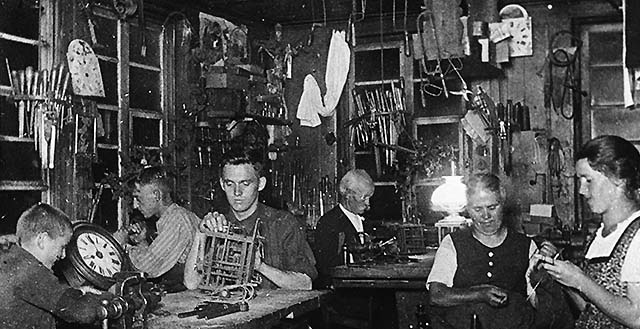
The Era of Experimentation. Biedermeier Clocks and Picture-Frame Clocks
Around 1840 many of the clock merchants could no longer sell enough wooden Black Forest clocks due to their deteriorating quality and reliability. At the same time, low-priced modern products from the first American clock factories crowded the market. The appearance of the Black Forest clocks was changed to make them more attractive.
Along with the lacquered dials, cases would be made in the form of a picture frame, at first using punched metal shields then, as from 1860, increasingly with reverse glass painting. Postman’s alarm clocks, round picture frame clocks with an alarm function, were popular in English offices. Closed clock cases with columns, i.e. “Biedermeier clocks” rounded off the assortment. Usually a standard Schotten movement with wooden plates could be found ticking on the interior of this new case.
The manufacturing method of the Black Forest clocks under-went change only gradually. Not until toward the end of the 19th century did factories begin to produce greater numbers of clocks than the small firms making clocks by hand.